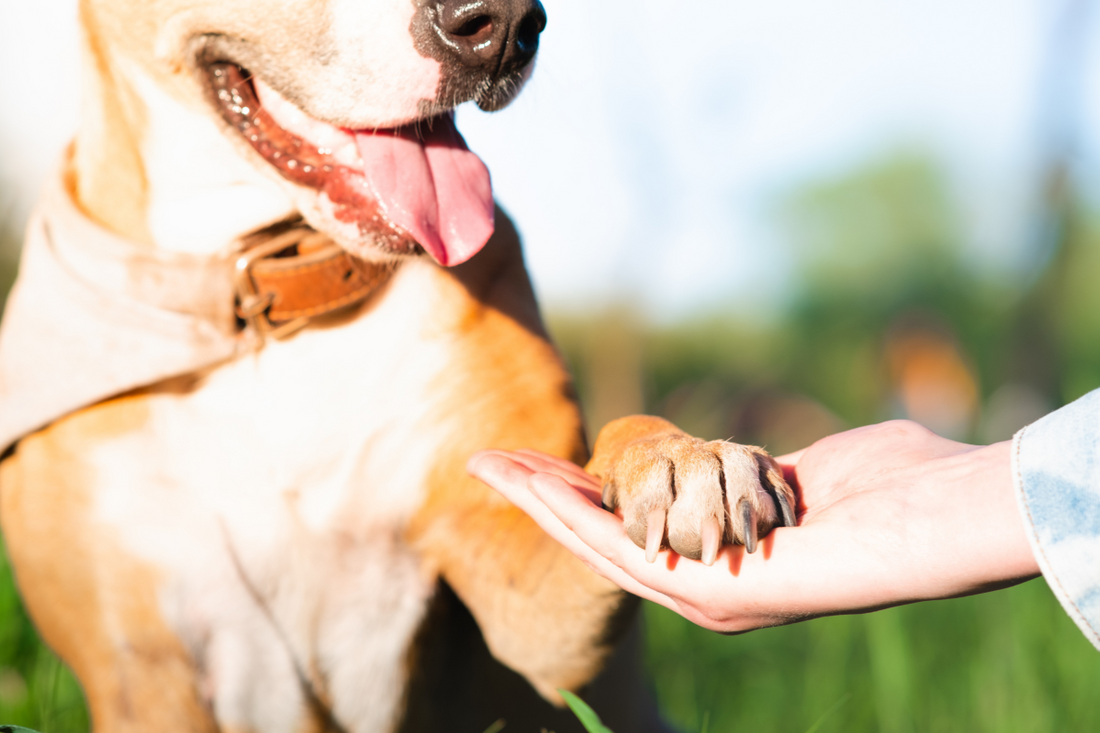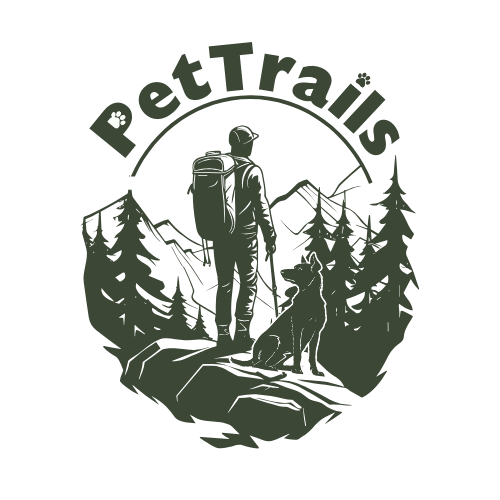
Summer Trail Surfaces: Protecting Your Dog's Paws from Hot Pavement, Sand, and Rocky Terrain
Share
Summer hiking season brings longer daylight hours, perfect trail conditions, and the irresistible urge to explore new adventures with your dog. But the same warm weather that makes hiking so appealing also creates hidden dangers right beneath your dog's paws. Hot pavement, scorching sand, and rough rocky terrain can turn a perfect hiking day into a painful emergency.
Your dog's paw pads might look tough, but they're still made of skin and can be just as sensitive as the bottom of your feet. When you're wearing hiking boots and your dog is going barefoot, understanding trail surface dangers becomes critical for safe summer adventures.
The Hidden Danger of Hot Surfaces
Summer surfaces heat up faster and get far hotter than you might expect. When the air temperature reaches 85°F, asphalt can register a scorching 135°F. Even on a seemingly comfortable 80°F day, pavement temperatures can soar to 125°F. At these temperatures, your dog's paw pads can burn in as little as 60 seconds.
The danger isn't limited to man-made surfaces either. Hot sand at the beach, sun-baked dirt trails, and even dark rocky surfaces can reach temperatures that cause painful burns and blisters. What makes this particularly challenging is that different surfaces retain heat differently. Dark asphalt and rocky terrain absorb and hold heat longer than lighter-colored concrete or grass.
The 7-Second Hand Test
Before heading out on any summer hike, use this simple test to check if surfaces are safe for your dog. Place the back of your hand firmly on the pavement, trail surface, or sand for seven seconds. If it's too hot for your hand to remain comfortable, it's too hot for your dog's paws.
This test works on all types of terrain, including asphalt, concrete, sand, metal surfaces, and even dirt trails. Your bare foot can serve as an alternative test surface if needed. The key is that if you can't comfortably hold contact for the full seven seconds, your dog shouldn't be walking on that surface.
Beyond Pavement: Sand and Rocky Terrain Challenges
Hot Sand Hazards Beach and lakeside hikes present their own paw protection challenges. Sand heats up quickly under direct sunlight and can become just as dangerous as hot pavement. Light-colored sand may seem safer, but it can still reach burning temperatures on sunny days. The loose nature of sand also means your dog's paws sink deeper into the heated surface, increasing contact time and burn risk.
Rocky Terrain Risks Rocky trails pose a double threat during summer hiking. Sharp, jagged rocks can cut and scrape paw pads, while dark stone surfaces absorb heat and can become scorching hot. Even natural stone surfaces that feel manageable to your boots can be dangerously hot for unprotected paws. The uneven nature of rocky terrain also increases the risk of cuts and abrasions, which then become more susceptible to burns from hot surfaces.
Timing Your Hikes for Paw Safety
The best protection against hot surfaces is strategic timing. Plan your summer hikes for early morning hours when surfaces have had all night to cool down. Evening hikes can work too, but remember that pavement and rocks retain heat long after the sun goes down, so test surfaces even in the evening.
Avoid hiking during the hottest parts of the day, typically between 10 AM and 4 PM when the sun is highest and surfaces are at their peak temperature. If you must hike during these hours, stick to shaded trails and grassy areas whenever possible.
Building Paw Pad Resilience
Your dog's paw pads can be gradually conditioned to handle more challenging surfaces. Start with short walks on cooler pavement during mild weather to help toughen the pads naturally. The key word here is gradually. The first long hike of the season can easily cause blisters if your dog's paws aren't properly conditioned.
Regular moisturizing helps prevent cracking and makes paw pads more resilient. Dry, cracked pads are more susceptible to burns and injury. Use a veterinarian-approved paw balm or moisturizer, applying it 2-3 times per week during hiking season.
Protection Options That Work
Dog Boots and Booties High-quality dog boots provide the best protection against hot surfaces, sharp rocks, and rough terrain. Look for boots with rubber soles, breathable materials, and secure wrap-around closures. The key is proper fit, snug enough to stay on but not so tight that they restrict circulation.
Many dogs need time to adjust to wearing boots. Start the introduction process at home with short sessions, using treats and positive reinforcement. Practice putting the boots on and taking them off, gradually increasing wear time until your dog is comfortable.
Paw Wax and Balms Paw wax creates a protective barrier on your dog's paw pads, offering some protection against heat and rough surfaces. Apply the wax before heading out on the trail, making sure to work it into the pads and between the toes. While paw wax isn't as effective as boots for extreme conditions, it's useful for dogs who won't tolerate footwear.
Disposable Paw Pads Peel-and-stick felt pads or silicone protectors offer a middle-ground solution. These thin, flexible pads stick directly to your dog's paw pads and can be cut to fit perfectly. They're easier to apply than boots and many dogs tolerate them better than full footwear.
Smart Trail Choices
When planning summer hikes, consider trail surfaces in your route selection. Grass and dirt trails stay cooler than pavement and asphalt paths. Shaded forest trails offer natural cooling and protection from direct sun. Water access along the trail provides opportunities for paw cooling and relief.
If your route includes unavoidable hot surfaces, plan for alternatives. Carry your dog across short stretches of hot pavement, or look for grassy strips alongside the trail where your dog can walk safely.
Warning Signs to Watch For
Learn to recognize the signs that surfaces are too hot or that your dog's paws are in distress. Dogs will often lift their paws repeatedly, walk with a stiff gait, or try to avoid walking on certain surfaces when they're uncomfortable. If your dog suddenly starts limping, whimpering, or showing reluctance to walk, check their paws immediately and test the surface temperature.
After any summer hike, inspect your dog's paw pads for signs of burns, cuts, or irritation. Look for redness, swelling, blisters, or any areas where the pad appears damaged. Early detection and treatment prevent minor issues from becoming serious problems.
Emergency Paw Care
If you suspect your dog has burned their paw pads, move them immediately to a cooler surface or shaded area. Carry them if possible to prevent further damage. Gently flush the affected paws with cool (not cold) water to provide immediate relief. Avoid applying ice directly to burned pads, as this can cause additional tissue damage.
Contact your veterinarian as soon as possible if you notice blistering, deep burns, or signs of infection. Minor burns can be treated at home, but serious paw pad injuries require professional veterinary care to prevent complications and ensure proper healing.
Making Summer Hiking Safe and Enjoyable
Protecting your dog's paws from hot surfaces doesn't mean giving up summer adventures. With proper preparation, timing, and protective gear, you and your dog can safely enjoy all the trails summer has to offer. The key is being proactive about surface temperatures, choosing appropriate protection for the conditions, and always putting your dog's safety first.
Remember that every dog is different. Some dogs have naturally tougher paw pads, while others are more sensitive to heat and rough surfaces. Pay attention to your individual dog's needs and adjust your protection strategies accordingly. A little extra preparation ensures that summer hiking remains a positive experience for both of you.
Summer trails are calling, and with the right paw protection knowledge, you and your dog can answer that call safely and confidently. Test those surfaces, pack the right gear, and get ready for a season of adventures together.
